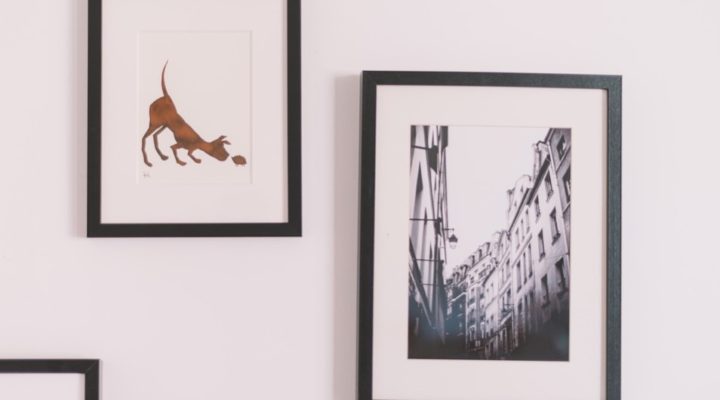
Art is, without a doubt, subjective. Therefore, what a person hangs or mounts in their respective office or home is a matter of opinion, style, and taste.
As such, there are a few practices that one should avoid when it comes to hanging a piece of art.
Whether for steering clear from unnecessary detriment to artwork or for aesthetic reasons, there are some important tips to keep in mind when hanging and displaying art. Hanging pieces of art is a powerful and simple way to beautify your office or home.
Whether it is an original photograph, painting, or your polaroid collection, hanging and showcasing art is an excellent way to give your space some intrigue, personality, and a pop of color. But as we said, there are a few practices to avoid. For a little help, here are what you should avoid.
Blank Spaces
Large blank spaces are somewhat a subjective consideration. However, for the most part, it is ideal for mounting artworks that will occupy the space correctly. Mounting a small-scale piece of art in a massive, empty space can, more often than not, make the art and room look unconnected and incoherent.
Fill large wall spaces with the right and appropriately sized art for a more amusing and charming aesthetic. Consider using large-sized pieces of art to occupy the space. However, it does not mean that you must, at all times, amass or mount large art.
As a matter of fact, numerous small-scale artworks mounted in a large wall space can, for the most part, establish an impressive and striking arrangement.
Not Firmly Fixed Hanging Fixtures
The last thing an art enthusiast or art collector would want to witness is their artworks crashing down on the ground after they have mounted them on a wall. To avoid such a dilemma, you should secure the hanging fixtures.
Even though your artwork is not large enough, it should be mounted on not less than two points by its wires. If possible or viable, utilize a stud as a firm foundation for mounting artworks.
Moreover, hanger and nails can be the support of the piece of art. Large-scale artworks must be hung or mounted using two points rather than one point for a more secure installation and stability. You can ask for help at any art installation centers, for example, art installations by MAC Art Galleries, to assist you in hanging and displaying your art.
Substandard Climates
To steer clear of damaging your artwork, don’t hang it in a room where temperatures rise and fall irregularly at least twenty degrees Fahrenheit on a day to day basis. For instance, do not or never hang a work of art in an attic during the summer season or an undone basement in the winter season.
Moderate humidity is, for the most part, an environmental factor as well. This environmental factor is a percentage that states the amount of humidity in the air parallel to the amount of moisture the air can handle.
For pieces of art, such as paintings, the relative humidity of an area must be at least twenty percent. You can measure or gauge the humidity using several tools such as hygrometers.
Height
Another practice to avoid is displaying art too high than the standard height. Sure, there are many practices to consider when mounting artwork. However, artwork height is one of the top factors.
It’s rather easy to mount artwork too high and make it look like it is awkwardly and in an ungainly manner displaying in a room. The simplest way to solve this issue is to mount the art based on its center and approximately fifty-seven inches from the ground, which is, for the most part, the average eye level.
Mounting art at average eye level also goes for hanging art above furniture. The bottom part of the artwork must be adequately close to furniture, about eight inches.
Direct Sunlight
Work of arts must be appropriately lit. However, steer clear of using the most abundant light source on Earth, which is the sunlight. Direct sunlight can, more often than not, lead to damage that’s impossible to repair.
The ultraviolet radiation from the sun can make a piece of art to warp, crack, or fade. It is especially true for painting on paper. These arts are more open to UV damage compared to metal and canvases. However, all sort of arts must avoid or keep away from direct sunlight. Take other lighting options into consideration, for example, LED.
Takeaway
Although the practices listed in this article should be avoided, there really is no wrong or right way to hang and display your artworks. However, if you want to help prolong the life of your precious pieces of art, then you should at least comply with these tips.
Leave a Reply